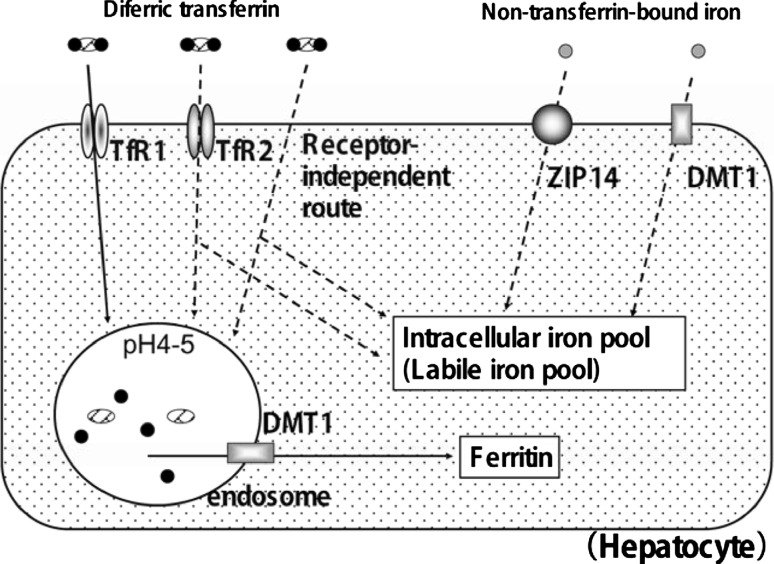Fig. 1.
Routes for iron uptake by hepatocytes. Hepatocytes have several pathways for iron uptake from the circulation. Concerning uptake of Tf-bound iron (Fe2-Tf) at physiological concentrations, there are three pathways involving TfR1, TfR2, and TfR-independent mechanisms. The pathway via TfR1 is a classical one and is well elucidated. When serum Fe2-Tf binds to TfR1, the Fe2Tf-TfR1 complex is internalized by endocytosis, and iron is released within the endosome when endosomal pH is acidic. The resulting apotransferrin-TfR1 complex is then recycled back to the cell surface for re-utilization. Released iron into the endosome is transferred to the cytoplasm by DMT1; the resulting cytoplasmic free iron is used for iron-related biological functions, and the rest of the iron is stored as ferritin. In addition to TfR1, TfR2 and the mechanism that is independent of TfR1 and TfR2, are also considered to be important routes for iron uptake in hepatocytes, but the details of these routes remain to be elucidated. Concerning the hepatic uptake of NTBI, which is present in the serum during conditions of iron overload, DMT1 and ZIP14 are considered to be involved

